20 Best Doctor of Economics Graduate Schools

Find your perfect college degree
The Doctor of Economics (Doctor of Economics, Ph.D.) is an advanced, terminal degree representing the highest level of academic achievement in economics. It can open doors to research, teaching, and consulting opportunities in the field of economics and beyond.
A doctorate program in Economics usually takes about 5 to 6 years to complete. The first two or three years are spent fulfilling coursework requirements. The first year of study is usually dedicated to completing the trifecta of economics basics: macroeconomics, microeconomics and econometrics.
The second doctorate year is dedicated to completing the coursework requirements of the chosen field major(s) and or the electives. The chosen majors are usually indicators of the student’s research direction or field of interest.
If the electives are separate from the majors in the curriculum – and these usually are – they serve the purpose of augmenting the student’s learning and background in preparation for further research and the dissertation requirement.
Quick audio summary:

The third year of study usually finds students either completing the electives and major courses or writing and defending a third-year paper, which helps students prepare for the dissertation proposal.
The dissertation proposal presentation usually takes place in the fourth year, while the fifth and sixth years (and sometimes, the seventh year) are spent executing the approved research plan and writing the final paper to the dissertation committee.
When the dissertation has been accepted, the title of Doctorate in Economics is conferred.
Exams are also important milestones within the program. Usually, one or two preliminary exams are administered between the second and third years.
These preliminary exams test a student’s comprehension of macroeconomics and the courses taken as part of the field majors and elective requirements. The oral exam, usually administered between the third and fourth years, represents the dissertation proposal defense.
METHODOLOGY
- For each school, the research areas or fields with the greatest faculty involvement are mentioned as a guide for students to help them decide on their research direction and prospective thesis adviser. Certain schools are known to specialize in some areas, or some areas will have a high faculty research involvement and, thus, denotes a strong research area for that school’s economics department.
- A Ph.D. program in economics, or any discipline, is mostly about research, especially published research. As such, the ranking below is mostly based on a school’s research contributions, which, for this article, are in the forms of:
- Published works in peer-reviewed journals,
- The number of research areas available in a school’s economics department, also the number of inter-disciplinary research areas available, signifies that the department embraces the integration and application of economics with other relevant disciplines, thus providing a more holistic, interconnected, timely and modern understanding of economics as it relates with relevant disciplines like finance, politics, policy, sociology, sustainability, health, business, information systems, entertainment (games, auctions) and even neuroscience (as it relates to the physiology of decision-making),
- Side note: this is why Caltech tops this list, while it is not a prominent name in traditional and semi-contemporary economics research, it does groundbreaking work in integrating economics with the abovementioned fields, especially with neuroscience, which should open the doors for more collaborative studies in these particular fields
- The number of research centers or institutes a school’s economics department has or with which it is affiliated,
- The number of fellows or researchers or associates in professional societies and national agencies like the National Academy of Sciences, or the National Bureau of Economics Research, the American Economic Association and other societies; the number of Nobel laureates for Economics are also factored in the ranking,
- R&D expenditures, whether privately or federally financed, also denotes research activity and thus, research contribution,
- The school’s prominence in various academic ranking reports is also a factor (averaged) in the rankings.
- Since many schools are tied based on the methodology itemized above, many schools are clustered together and share the same ranking (numbers 2, 3, and 5). For those that are clustered in one ranking, they are listed alphabetically.
THE 20 BEST DOCTOR OF ECONOMICS GRADUATE SCHOOLS
California Institute of Technology (Caltech)
Division of the Humanities and Social Sciences

Pasadena CA
Ph.D. in Social Sciences (focus on Economics)
Caltech’s Division of Humanities and Social Sciences (HSS) is home to the field of experimental economics, thanks to its alumnus Vernon Smith of class 1949, who pioneered the use of human test subjects to investigate the interaction between markets and economic and financial institutions. In 2002, he was awarded the Nobel Prize in Economics for this groundbreaking research method today.
- Caltech offers a Ph.D. program in Social Sciences that takes a modern and collaborative approach to economics by enveloping it in an all-encompassing program covering economics, political economy, history, political science, psychology, law, policy and even anthropology.
- The program also employs an innovative approach to economic research through laboratory experiments and neuro-imaging technology.
- Applicants and incoming Ph.D. students should demonstrate a solid background in calculus (four semesters), linear algebra, mathematical statistics and real analysis.
- Despite being named as a Social Science doctorate, the program does emphasize research in the various branches of applied economics and traditional economics, such as:
- Applied Microeconomics
- Business, Economics and Management
- Economics and Computer Science
- Economic History
- Economic Theory
- Political Economy
- Social and Decision Neuroscience
- Statistical Methodology
- Faculty involvement in these research areas is highest with the first two fields mentioned.
Standout Features of the Program:
The faculty in charge of the Ph.D. SS program is comprised of nearly 40 professors and researchers hailing from various disciplines – from economics, finance, social science, computational sciences (math and statistics), political science to neuroscience. The majority of the faculty are specialists in economics, with about a fifth of the faculty being specialists in neuroscience.
The basic operator of economics is decision-making, and Caltech’s HSS Division recognizes that. In line with its tradition of innovation and breaking ground, HSS offers an alternative to the Social Science Ph.D. program, the Ph.D. program in Social and Decision Neuroscience. Students under this program will learn how to devise neurocomputational models and integrate mathematics, statistics, neuroscience, and information science to get to the bottom of human decision-making abilities – the triggers, the stimulants, and the nuances.
Harvard University
Department of Economics

Cambridge, MA
Since its establishment in 1897, Harvard’s Department of Economics has been consistently regarded as one of, if not the most selective Economics Ph.D. program in the U.S. today.
It offers courses and programs at every level, taught by nearly 60 faculty members who are renowned industry economists and or researchers.
- Applicants must possess an above-undergraduate level of understanding of economics. They are also required to have research experience, whether at the helm or as a research assistant.
- Mathematics courses are also required, with the minimum being linear algebra and calculus, but the more mathematics courses are taken at the undergraduate and master’s levels, the better. A background in probability, statistics and computer programming may also be advantageous.
- Additionally, a major requirement for admission is a 15-page writing sample.
- Second-year students are expected to elect two concentrations or emphases and enroll in courses related to these.
- Third-year students are required to apply for teaching fellowships.
Standout Features of the Program:
The department faculty does research in a wide array of fields in economics, such as labor economics, public economics, macroeconomics, and behavioral economics, among others. These are also the four research areas with the highest activity based on faculty involvement.
The department is involved in four research initiatives that study how human behavior, big data, public policy, and microeconomics impact the discipline of economics as a whole and vice-versa. The department’s esteemed academe leads these initiatives, with one of the four centers, the German Administrative Data Project, representing an investigative collaboration between Harvard Economics and the German Federal Employment Agency.
Princeton University
Economics Department
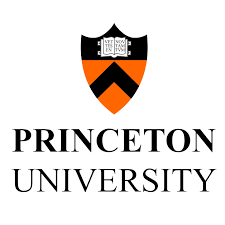
Princeton, NJ
Princeton Economics has always been at the forefront of economic research and innovation. Two of its faculty members are Nobel laureates, and the department consistently publishes research in various esteemed publications such as the Journal of Economic Dynamics and Control and the American Economic Review, to name a few.
- The graduate program in Economics is one of the most highly selective, as it only accepts a maximum of 25 students per year.
- Students are expected to receive financial support throughout their freshman year through fellowships. The fellowship funding may also be extended during the summer term to help fund their research activities.
- The program is a straightforward doctorate program with no option for a master’s degree.
- Students can choose from any of the 28 research areas, which, aside from the traditional research areas, also include contemporary subfields like health economics, environmental and energy economics, political economy of China, structural microeconomics and, urban and spatial economics.
Standout Features of the Program:
Princeton Economics consists of 80 faculty members actively researching various economic fields, as mentioned above. Many of the department’s research concentrates on financial economics, political economy, economic theory, and labor economics.
Princeton Economics is affiliated with 16 research centers that touch on the various facets of economics, such as macroeconomics, international economics, and public policy. Under public policy alone, there are three research centers: Princeton Program in Public Finance, Julis-Rabinowitz Center for Public Policy & Finance, and the Griswold Center for Economic Policy Studies.
University of California Berkeley
Department of Economics

Berkeley, CA
Berkeley Economics is a pioneering force in diversity and equality. Soon after its establishment in 1903, the department was home to Berkeley’s first female full-time professor, Dr. Jessica Peixotto. Female faculty members would then flock to Berkeley Economics in waves – first, before WWI, and second in the early ’70s.
- The Ph.D. program in Economics usually takes six years to complete, with the first three devoted to coursework and electing preferred research fields in preparation for doctoral candidacy, while the last three years are devoted to completing the dissertation.
- First-year students are required to take courses in the following areas: macroeconomics, microeconomics, mathematics for economics, econometrics, theory, history and research in economics.
- Second-year students are expected to undergo examinations for their chosen fields. They can choose two from the 23 areas offered by the department, which also include alternative fields like Urban and Regional Economics, Health Economics, City and Regional Planning, Education and Economics, and Resource Economics.
- Third-year students are expected to complete the required semester-long Departmental Seminars (any available seminar for the current term). Only then will they be allowed to undergo the doctoral qualifying exams, mostly composed of the dissertation proposal.
Standout Features of the Program:
Students can engage in any of the 18 research fields available within the department, including traditional fields like theory and econometrics, alongside contemporary fields like monetary theory and behavioral economics.
Research fields with the highest faculty involvement, ergo, research activity, are the fields of finance, international economics, labor economics, macroeconomics, and public economics.
Berkeley Economics is affiliated with 14 research centers, which include the Opportunity Lab for policy research, the Econometrics Laboratory (EML), and the Center for Effective Global Action, to name a few, which provides researchers an avenue for the practical application of economic research.
University of Michigan
Department of Economics

Ann Arbor, MI
Michigan’s Department of Economics comprises nearly 70 professor-researchers involved in the various fields of economics. The department does research in 14 areas, including traditional areas like labor economics and industrial organization (which are the fields with the greatest faculty involvement) and contemporary areas like health economics and environmental and resource economics.
- The Ph.D. program in Economics, while taught and offered by the Department of Economics, is administered by UM’s Rackham Graduate School. All applications will be screened centrally, which, for AY 2020, will not include or require GRE results.
- The program also offers the option of double doctorates through its joint program offerings. Econ Ph.D. students can also choose to pursue a second Ph.D. in Business, Public Policy, or a field of their choosing through the Individually Interdependent Degree Program (IIDP), also known as the Student Initiated Degree Program (SIDP).
- While first-year students are required to complete the traditional introductory courses (macro, micro, econometrics and math), second and third-year students are expected to complete courses in the various fields of economics, from advanced methods to monetary economics, labor economics, industrial organization, international economics, to public finance, among others.
Standout Features of the Program:
The Michigan Institute for Teaching and Research Education (MITRE) is a research hub out of UM Economics that houses faculty and student investigative work in various economic fields. It is also a teaching initiative that provides aspiring Econ instructors with valuable training and project collaborations. It also provides funding for research, such as the William Haber Fellowship.
UM, Economics has an impressive track record in job placement year after year. For AY 2019-2020, many of its graduates are now tenure-track faculty members in renowned universities such as Harvard, Stockholm University, and Tsinghua University, while some secured roles in public financial institutions like the Treasury Department, the Congressional Budget Office, the World Bank, and the International Monetary Fund, to name a few.
University of Pennsylvania
School of Arts and Sciences

Philadelphia, PA
Penn Economics is hailed as among the country and the world’s top schools for economics. Its prominence is mostly attributed to the three major economic research centers it houses or is affiliated with: the Penn Institute for Economic Research (PIER), the Philadelphia Federal Statistical Research Data Center (PFSRDC), and the Penn Initiative for the Study of Markets (PISM).
Additionally, it is also the home of one of the world’s esteemed publications in economics, the International Economic Review (IER).
- The Doctorate in Economics program is a straightforward graduate program with no option for a master’s degree. Also, only full-time enrollments are accepted into the program.
- First-year students must complete courses and the corresponding preliminary exams in econometrics, macroeconomics and microeconomics.
- Second-year students are required to complete the Empirical Economics requirement, a set of courses that circle the application of economic theories and instruments on various actual economic institutions.
- Third-year students are expected to complete workshop courses, while fourth-year students must complete their dissertation proposals before the spring term concludes.
Standout Features of the Program:
While the Penn Economics faculty does research mainly in four areas of economics – econometrics, macroeconomics, empirical microeconomics, and microeconomic theory, what makes the department and, by extension, the program, stand out is the faculty’s extensive involvement in published work, whether through books, papers, and publications in peer-reviewed journals.
The International Economic Review (IER) is a product of Penn Economics and Osaka University published every quarter since 1960. It is a highly regarded, world-leading peer-reviewed journal in economics.
Massachusetts Institute of Technology
Department of Economics

Cambridge, MA
MIT Economics has been at the forefront of civil service and research since the late 1800s, with the involvement of then Brigadier General and MIT President Francis Amasa Walker in the U.S. Census.
Amasa also established the American Economic Association and became its first president. Right around WWII, the department would then offer master’s and doctorate degrees in economics.
- The Ph.D. in Economics program exposes students to rigorous research work as early as the first year of study.
- First and second-year students are required to complete the following core courses: Micro Theory, Macro Theory, Econometrics, and Statistical Method in Economics & Applied Econometrics, as well as a course on Advanced Research and Communication.
- Second-year students submit a research paper to fulfill the requirements for the Econometrics course.
- Students are also required to elect four concentrations or special fields – two majors and two minors – from which they need to complete the prescribed coursework.
Standout Features of the Program:
Students can select from any of the ten concentrations for their major and minor declarations. The fields also denote the research areas under which the department faculty are involved, with the areas of theory, macroeconomics, and international economics with the highest research activity.
MIT Economics is home to five research centers. Among these include the MIT-Central Banks collaboration World Economy Laboratory and the Center for Energy and Environmental Policy Research, which is the brainchild of three MIT schools and centers – Economics, the Energy Initiative, and the Sloan School.
Yale University
Department of Economics
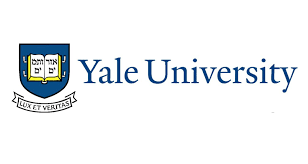
New Haven CT
Yale University’s Department of Economics is composed of more than 50 faculty members who are experts in 14 areas of economics. Among the department’s strongest and most active areas in terms of research are Industrial Organization, Microeconomics, Macroeconomics, and Public Economics.
- The Ph.D. in Economics program must be completed within six years of registration. Students must reside in New Haven for a minimum of three years during enrollment.
- Students must complete a minimum of six graduate courses in economics to be admitted into the second year of graduate studies.
- All Yale graduate students are required to meet the “Two Honors” requirement. For Econ doctorate students, this means completing two economics graduate courses with a minimum grade of H-, which should be completed by the end of the second year.
- The student’s third year should also complete the qualifying exam for doctoral candidacy. Students are given two attempts to take their first attempt as early as their second year.
Standout Features of the Program:
Students can choose to do research in any of the department’s 13 research areas, including foundational fields in economics such as macroeconomics, microeconomics, econometrics, economic history, and financial economics.
With a faculty comprised of 50 professors (both tenured and non-tenured) and an average Ph.D. enrollee count of 125, Yale Economics provides an optimum faculty/student ratio of one professor to two or three students. This optimum ratio is considered one of the best among all the economic schools in the U.S.
Brown University
Department of Economics

Providence RI
Brown University’s Department of Economics is home to the Orlando Bravo Center for Economic Research, which is the university’s research hub for all things economics.
Brown Economics is also home to the editors of many of the discipline’s respected peer-reviewed journals like the American Economic Journal and the Journal of Economic Growth.
- Brown University’s doctorate in Economics boasts strong research and training in economic analysis and theory.
- First-year students must complete the following courses: Econometrics, Macroeconomics, Microeconomics, Mathematics, and Applied Economics Analysis.
- Students are also required to attend seminars or colloquia, and they can choose from topics like macroeconomics, applied microeconomics, econometrics and economic theory.
- Students can choose to research any of the five research areas the faculty are involved in. Finance, macroeconomics, applied microeconomics, econometrics, and experimental and economic theory.
Standout Features of the Program:
The Department of Economics is helmed by 30 esteemed faculty members, societal fellows, research grant recipients, and editors of academic literature (book and journals). Students will have no shortage in the choice of a thesis adviser. As for funding, students can consider applying for in-house funding through the Bravo Center Research Grant.
Students looking to do integrative research in population, policy development, and economics can engage with the university’s Population Studies and Training Center. Aside from demographics and social mobility, the center also tackles community-level issues like reproductive health and other national and global issues like health economics, urban economics, environmental economics, and diversity and inequality.
New York University
Department of Economics

New York, NY
NYU Economics is a research powerhouse that not only boasts of Nobel laureates in Economics and National Academy of Science fellows.
It is also home to various research institutes such as the Development Research Institute (DRI) and the Center for Research in Applied and Theoretical Economics (CRATE), which aim to deepen and expand the tenets of economics, and the Institute for the Study of Decision Making (ISDM, or the Center for Neuroeconomics), which is an interdisciplinary research institute combining economics, neuroscience, psychology, medicine, and information systems.
- NYU Economics only accepts full-time enrollment for its Ph.D. program. Enrolled students must complete a minimum of 72 credits, with at least 64 credits earned while in campus residence.
- Minimum coursework requirements for first-year students include all two levels of Econometrics, Macroeconomics and Microeconomics, a course on Mathematics for Economists, and two advanced courses or seminars.
- Second-year students must elect two concentrations for the field requirement and complete the appropriate coursework under these. There are two qualifying exams with topics on microeconomics and macroeconomics before the third year of study.
- Third-year students must submit research papers in preparation for the dissertation proposal oral exam or the doctoral candidacy exam.
Standout Features of the Program:
Students can choose to research 13 areas of economics, which includes strong research activities in macroeconomics and microeconomics. Other budding research areas include asset pricing, corporate finance, monetary economics, and experimental and behavioral economics.
NYU Economics is home to the C.V. Starr Center for Applied Economics, the department’s research hub tackling the most concerning and highly impactive socioeconomic issues today, both on national and global levels. The Department is also involved in collaborative research through NYU’s Center for Experimental Social Science (CESS), which, aside from Economics, enjoins the bright minds from the departments of Psychology, Neuroscience, Political Science, and Social Science.
Northwestern University
Department of Economics
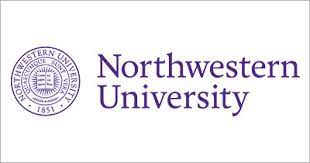
Evanston, IL
The Northwestern Economics Department comprises 60 faculty members close to other Northwestern schools like the Kellogg School of Management (KSM). These professors are involved in eight research areas, but the department is acclaimed for its strong macroeconomics research, which laid the ground for the Dynamic Stochastic General Equilibrium (DSGE) models for fiscal policy and labor analysis.
- Northwestern offers a straightforward Ph.D. degree in Economics. However, a terminal master’s degree is not offered as a program but can be conferred to Ph.D. students who have completed their first year of studies.
- The program is highly selective, with only an average of 25 students admitted yearly. The result is an average of 120 Ph.D. students in residence every year.
- First-year students must complete the following core courses: all three levels of Microeconomics, Macroeconomics, Econometrics, and Mathematical Methods for Economic Theory.
- Students who need additional training in advanced mathematics for economics may request permission from the department to take additional math courses such as Real Analysis.
Standout Features of the Program:
Students can choose to research any of the nine areas of economics available in the department. Many of these fields involve collaborative research with the Kellogg School of Management. These fields include Macroeconomics, Health Economics, Development Economics, Financial Economics, and Labor and Public Economics.
The Economics Department and KSM have also collaborated to offer the joint Ph.D. in Financial Economics program. Students under this program are expected to integrate their robust training in economics with finance courses like Asset Pricing and Corporate Finance.
Students can take advantage of the eight economic research centers housed by the Economics Department. It has research institutes in traditional economic areas like econometrics, theory, history, and macroeconomics and contemporary economic areas like poverty research and data science for economics.
Stanford University
Department of Economics

Stanford, CA
Stanford Economics has always been regarded as a research powerhouse since its establishment in the ’60s, particularly in Economic Theory.
But as years went by, the department’s research footprint has expanded to now include more than 20 areas, with the fields of Applied Microeconomics, Financial Economics, Labor Economics, and Macroeconomics as some of its strongest and most active research areas based on faculty involvement.
- First-year Ph.D. students must complete the core courses comprising microeconomics, macroeconomics, and econometrics.
- They must also elect two areas as their majors. Each area will have its own set of requirements. Students can choose from any of the 14 research areas available, including Behavioral and Experimental Economics, Environmental, Resource and Energy Economics, Market Design, and International Trade and Finance, among others.
- Students must also take four courses from the two other areas not selected as major fields. One of the courses must stem from the field of Economic History.
- A one-quarter-long teaching experience is required. Students are also required to render a 135-unit residency. They are also required to attend workshops or field seminars in the field(s).
Standout Features of the Program:
Students can choose to research any of the 21 fields of interest available in the department. The list includes Applied Microeconomics, Decision Theory, Economics of Technology, and Game Theory.
The Stanford Institute for Theoretical Economics (SITE) is a yearly conference held every summer that brings together all of Stanford Economics – faculty, students, researchers – and other experts and collaborators in the field. The conference features workshops and seminars that encourage discussions, project collaborations within economics, related disciplines, academic and professional networking, and further research. SITE enjoys generous funding from the NSF and other Stanford departments.
Columbia University
Department of Economics
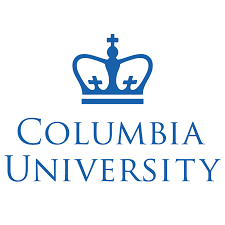
York, NY
Columbia Economics is home to many Nobel laureates, including Milton Friedman, best known for his monetary theory and stabilization policy studies, and William Vickrey. He pioneered the Game Theory in understanding how sealed-bid auctions work (Vickrey auctions).
- The Ph.D. program in Economics requires the completion of courses in econometrics, microeconomics, macroeconomics, mathematical methods, and perspectives in economic theory during the first year of study.
- Research begins during the second year, with students presenting their research papers in a colloquium. They must also elect two concentrations and complete the appropriate coursework.
- The dissertation proposal should be presented during the fourth year of study. To help them prepare, students must submit another research paper the year prior (year 3).
- Students can choose to do research in any of the traditional fields of economics, such as macroeconomics and microeconomics, or choose a more contemporary field such as urban economics, public finance, labor economics, or industrial organization.
Standout Features of the Program:
While Columbia Economics offers several areas of interest under which students can do research, three of the program’s strongest research areas are in the field of empirical economics, applied economics, and theoretical economics.
The Department of Economics partakes in the university’s Bridge to Ph.D. program, which accepts applicants annually. This is a good stepping stone – both academically and financially – for post-baccalaureates who are aspiring to apply to grad school. Successful applicants will land roles as full-time RAs with an annual salary of $51K (based on AY 2020-2021).
They are expected to enroll in a few economics electives like mathematics, real analysis, statistics, or introductory economics (macro, micro, econometrics) while rendering RA work in preparation for their application and subsequent admission to graduate school.
University of California Los Angeles
Department of Economics
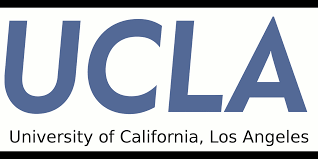
Los Angeles, CA
Ph.D. in Economics
UCLA Economics has produced acclaimed graduates trained by equally acclaimed faculty and researchers. It is also home to important macroeconomics, economic history, industrial organization, and population research.
- Before starting the doctoral program, students must participate in the two-week Math Camp, which equips them with mathematical foundations for economics (Econ 200) and navigating the statistical software MatLab.
- Otherwise, incoming Ph.D. students confident in their advanced math skills may opt to tackle the online modules via the Essential Microeconomics website in preparation for doctoral work. To help students complete the modules, students can go through the Calculus of Economics modules as needed.
- Second-year students must elect three of the ten field concentrations offered by the department. They can also take related non-Econ courses (not offered by the Department) such as finance, marketing, political science, public policy, mathematics, statistics and electrical engineering.
Standout Features of the Program:
Students looking at teaching assistantships as a source for funding can browse the UCLA Economics Teaching Resources page for tutorials on using LMS tools, a class archive for course syllabi, or resources on teaching techniques.
UCLA Economics is home to esteemed alumni, researchers, and Nobel laureates in Economics, which includes Dr. William Sharpe, an alumnus of the department’s graduate school who pioneered the Capital Asset Pricing Model and several investment performance analytical tools, such as the Sharpe Ratio, the returns-based style analysis, the binomial method, and the gradient method for asset appropriation.
University of California San Diego
Department of Economics

La Jolla, CA
UCSD Economics prides itself with its strong training and research in the fields of microeconomic theory, econometrics, applied microeconomics, and macroeconomics, as well as its formidable and productive collaborations with UCSD’s Public Policy, Management, and Political Science schools.
- UCSD has stringent student requirements for its Ph.D. in Economics program. Among these are:
- The maintenance of full-time status, equating to 12 units, to be continually eligible for funding,
- Two-year in-campus residency,
- The maintenance of a 3.0 GPA.
- As for the course requirements:
- Students must complete the course on Computation (Econ 280) and the empirical project, which is required by the Econometrics course.
- They also need to take seven electives, which must be completed before the end of Year 3. There are close to 30 elective courses from which students may choose.
- Students must choose two concentrations and complete the prescribed number of required courses. There are 12 field concentrations from which students can choose, including the traditional fields and contemporary ones like Behavioral/Experimental economics and Environmental & Natural Resource Economics.
Standout Features of the Program:
Students can choose to research any of the 14 research areas being tackled by the department. Some of the highly active research fields are Development Economics, Econometrics, Finance, Labor Economics, Macroeconomics, Microeconomic Theory, Political Economics, and Public Economics.
The department houses the Center for Environmental Economics and the San Diego Education Research Alliance (SanDERA). Both research centers integrate economics with other relevant disciplines to help influence policy reforms, opportunities, and initiatives.
The University of Chicago
The Kenneth C. Griffin Department of Economics
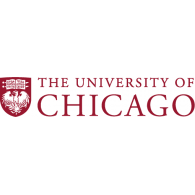
Chicago, Illinois
Chicago’s Department of Economics, which was renamed The Kenneth C. Griffin Department of Economics in 2017 after the generous donation of the eponymous foundation, is the birthplace of many tenets and facets of economics, such as behavioral economics, political economy, and financial economy. It is also the birthplace of The Journal of Political Economy.
- Chicago Economics usually offers admission to about 55 applicants, with only about half enrolling into the program, thus, ensuring an optimal professor-to-student ratio.
- The department only offers a Ph.D. graduate program in Economics. A terminal MA degree is not offered.
- Students can choose to do research in Applied Microeconomics, Econometrics, Macroeconomics and Economic Theory. Research in Applied Microeconomics has the highest faculty involvement.
- Students can opt to pursue a joint Ph.D. degree in Financial Economics, as offered by the Booth School of Business, along with the Economics Department. Applicants can lodge their applications through the Economics Department or the Booth School.
Standout Features of the Program:
Chicago Economics is affiliated with several research centers, including the Center for the Economics of Human Development (CEHD), the Energy Policy Institute, and the Becker Friedman Institute for Research Economics. The Becker Friedman Institute is a joint effort of the Economics Department, Chicago Law School, Booth School of Business, and Harris School of Public Policy.
The Economics Department is home to the Griffin Applied Economics Incubator, a research and policy hub where economic studies and statistics drive change through policy formulation and or reform. Every year, the incubator tackles a global or national socioeconomic issue that allows academics to collaborate across disciplines.
University of Minnesota
Department of Economics

Minneapolis, MN
UMN’s Department of Economics boasts having Nobel laureates among its Ph.D. alumni. From the class of ’64, Daniel McFadden, who authored the paper on the Development of the Theory and Methods for Analyzing Discrete Choice, was awarded the Nobel in 2000. From the class of ’78, Lars Peter Hansen, who pioneered the Generalized Method of Moments, was awarded the Nobel in 2013.
- Incoming Ph.D. students must be equipped with a strong background in computational courses, such as linear algebra, multivariate calculus, and econometrics.
- Students are also required to complete all four levels of Microeconomics and Macroeconomics courses.
- Eight credits of electives are required. Students can choose from this catalog, which includes courses in computer science, finance, mathematics, psychology and statistics.
- The dissertation is worth 24 credit units. Students can choose to research the 13 areas of interest available within the department. These include traditional macroeconomic and microeconomic theory fields and contemporary applied fields like game theory, monetary economics, and mathematical economics.
Standout Features of the Program:
UMN Economics is home to the Heller-Hurwicz Economics Institute, which specializes in economic theory research, the Minnesota Economics Big Data Institute (MEBDI), which specializes in the use of data science in applied economic research; and the Economics Research Library (ERL), which is a repository for all published sources on economics, both in-house and from external sources like federal agencies.
Two of UMN Economics’ younger graduates have also brought pride to the department and the university. Connan Snider and Thomas Youle of classes 2010 and 2014, respectively, uncovered initial and damning evidence of collusion among bankers as early as 2008, resulting in the LIBOR (London Interbank Offered Rate) Rigging Scandal, considered by many economists as the biggest global financial scandal in the world.
Cornell University
Department of Economics

Ithaca, New York
Cornell Economics is a collaboration between the department itself and other Cornell schools such as the Johnson School of Management, Cornell Law, the Department of Policy Analysis and Management, Cornell Hotel School, the Dyson School of Applied Economics & Management, and the Division of Nutritional Sciences.
The result is an Economics Department that boasts of strong research in the tenets of economics and the contemporary and integrative applications of economics in other fields, such as finance, law, policy, business, hospitality, and health economics.
- Incoming Ph.D. students must demonstrate a solid background in calculus, linear algebra, real analysis and advanced mathematics. A minimum of four semesters is the bare minimum. To stand a greater chance for funding, students are strongly advised to cultivate a more extensive mathematics background with exposure to differential equations, probability, statistics, topology, stochastic equations, and complex analysis.
- In the case of inadequate mathematics courses exposure, students can enroll in the three-week mathematics review course before the fall term.
- As for undergraduate economics background, the bare minimum is microeconomics and intermediate-level economic theory. A major in economics for post-baccalaureates is not required in the doctorate program.
Standout Features of the Program:
Cornell Economics faculty comprises nearly 60 professors and researchers involved in 40 different areas of interest in economics. The extensive list of fields of study includes traditional areas of economics, as well as highly specific and contemporary fields such as Insurance, Contract Theory, Gender Economics, Family Economics, Inequality, Race and Discrimination Economics, Decision Theory, Big Data, Compensation, Law Economics, Economics of Crime, Networks, and Information Economics.
Cornell Economics is home to the renowned S.C. Tsiang Macroeconomics Workshop, named after the department’s eponymous alumnus and eventual professor emeritus, known for his contributions to macroeconomic theory and monetary economics.
University of California Davis
Department of Economics

Davis, CA
Nearly 20 of UC Davis Economics faculty (which is about half of the faculty) hold research associateship and research fellowship roles at the National Bureau of Economic Research (NBER), which is the national authority on economic research and policy advisement.
- First-year Ph.D. students must complete the courses on econometrics, macroeconomics and microeconomics.
- They are then required to elect three areas of concentration from the following fields of study:
- Advanced economic theory
- Public economics
- Advanced macroeconomics
- Economic development
- Economic history
- Econometrics
- International economics
- Industrial organization
- Labor economics
- The UC Davis Economics faculty comprises nearly 40 professors and researchers who specialize in 16 areas of economics, with the fields of International Economics and Macroeconomics as some of the faculty’s strongest research fields.
- The department is affiliated with various research centers that deal with economic history, international economics, socioeconomic issues, and energy economics.
Standout Features of the Program:
Students who choose to research in Regional and Urban Economics may engage with the Center for Poverty Research for insight, sources, and research funding.
The Department of Health & Human Services funds this federal institute that focuses on the issues of the marginalized sector and helps create policies and opportunities towards upward social mobility. Students may also reach out to Professor Giovanni Peri for consultation and advisement in this area.
The department hosts seminars for nine areas of interest in economics regularly. These are seminars on macroeconomics, international economics, behavioral economics and many other fields.
University of Wisconsin Madison
Department of Economics

Madison, WI
The following major requirements define UW’s doctorate program in economics: completing the preliminary exams on Microeconomic and Macroeconomic Theory, a research paper on the chosen major field by Year 3, three signatures on the dissertation proposal signifying committee acceptance, and the acceptance of the dissertation defense.
- First-year students must take the following courses during the fall term: microeconomics, macroeconomics, economic statistics and econometrics, and mathematical economics.
- The second level of all previous courses must be taken (except for mathematical economics). Students can take an elective course to complete the four-course term during this term. This could be a course on statistics, economics, or mathematics.
- Second-year students are required to elect major and minor fields. Aside from mathematics and statistics, students may also elect a minor field from another department for the minor fields.
- Aside from the two-course requirement for the major fields, students must also attend the appropriate workshop for that field. These workshops are funded by the Juli Plant Grainger Institute (JPGI) for Economic Research.
Standout Features of the Program:
The Juli Plant Grainger Institute (JPGI) for Economic Research is the department’s hub for economic researches, both student and faculty work. It also provides funding and hosts conferences and seminars or workshops specific to the seven areas of study in economics currently being tackled by the department.
The department faculty comprises nearly 60 professors and researchers, most of whom are involved in macroeconomics, labor economics, and public economics and finance.

FREQUENTLY ASKED QUESTIONS
What advantages does a Doctor of Economics have over the others?
In 2020, the BLS reported that the median pay of an economist with a master’s degree is more than $108K a year, with a projected job growth of 13% over the next ten years, which is considered above average by agency standards.
What more if the economist has a doctoral degree? Expect that median pay to increase, at the very least, by half or at best, maybe even by a hundred percent.
Professionals with a doctorate in economics can command that high salary because they demand across industries. From the academe to business enterprises, to research organizations (non-profit or government-funded), legislation and policy, to politics, data science, and information systems, financial markets and instruments, or consultative services, economists, and especially those with a Ph.D., can always carve a significant career in any industry and be probably set for life (holds for tenured professors).
Who can apply to the program?
All baccalaureate graduates (those with a bachelor’s degree) in any degree can apply to doctorate in economics (or similarly named) programs. While all graduates can freely lodge their applications, not everyone passes, as most econ doctoral programs are highly selective, with only an average acceptance rate of 25 students per year.
Those with a formidable background in undergraduate or graduate (master’s degree) in economics, mathematics, statistics, finance or any degree with a significant foundation in advanced mathematics stand a greater chance of being accepted.
If the applicant comes from a different degree background, say, the health sciences or political science, the applicant may still strongly qualify for admission provided that a strong mathematics background is demonstrated. Courses like linear algebra, real analysis, multivariate and differential calculus, and statistics are minimum pre-Ph.D. requirements.
Are GRE scores required? What are the other admission requirements?
Not for AY 2022, but best to check with the school’s admission office to be certain. The other admission requirements are the completed application form, a resume, letters of recommendation preferably from previous and current employers, a personal essay, all transcript of records, and proof of payment of the application fee.
Again, check with the school’s economics department or admissions office for other requirements that may be specific to the program.
How will earning a Doctorate in the field of Economics advance my career?
A Doctorate in Economics can open up a wide range of career opportunities in the fields of academia, business, government, research, and consulting. With a Ph.D. in Economics, you could apply for positions such as economic analyst, professor, policy specialist, economic consultant, market researcher, and finance manager. You may also be able to qualify for more senior-level positions that would require your advanced and specialized knowledge.
As a doctoral-level economist, your skills would be highly sought-after, making you a valuable asset to any organization. With a Doctorate in Economics, you would have the opportunity to make an even greater and more lasting impact in the world of economics.




